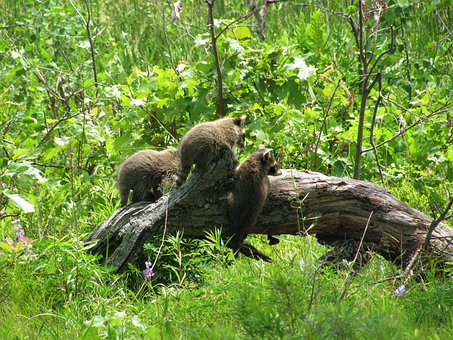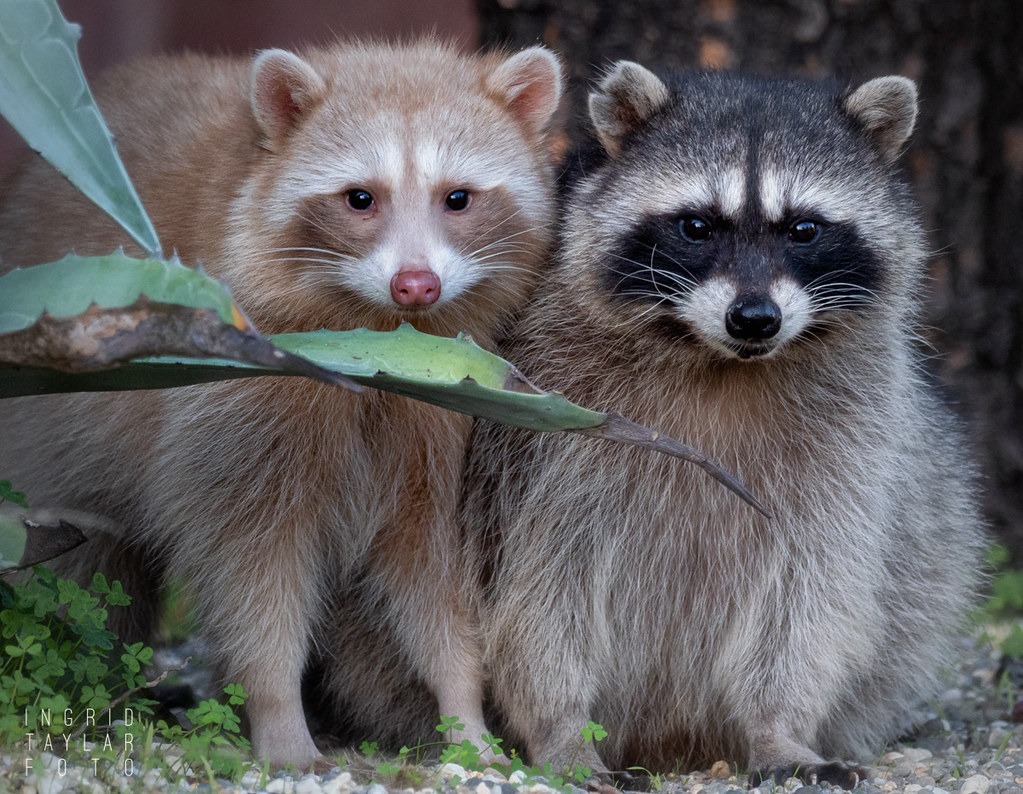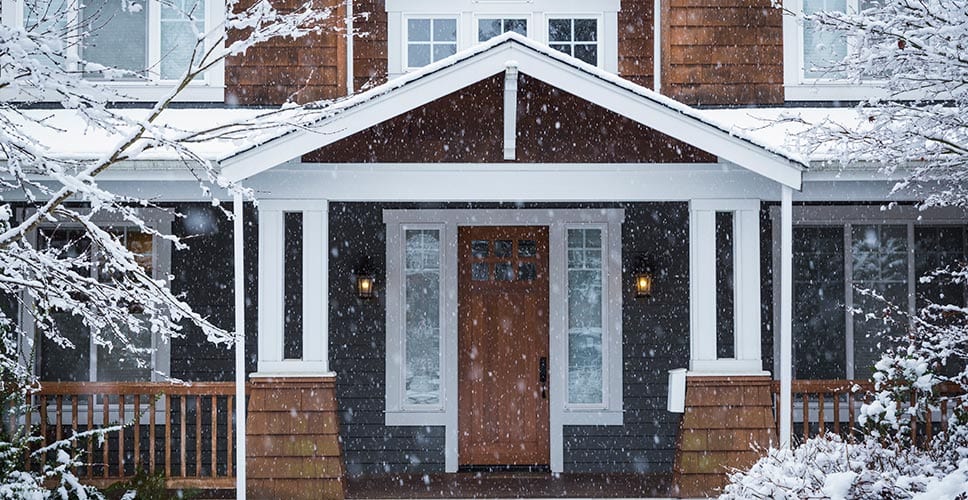by SOS Wildlife Control | Nov 9, 2015 | Helpful Tips
Last Updated: May 2016
You’ve heard the saying “winter is coming” and with winter, also comes wildlife. Seeking shelter from the cold and new breeding grounds, they are quite adept at getting into your home. They will claw, scratch and clamor from the side vents, rooftops and even soffits. The best way to prevent animals from coming into your house is to wildlife proof your home with a qualified wildlife control specialist. If you are unable to do this, there are still steps you can take to ensure you property is less attractive to animals. Here is an extensive list of wildlife preventive tips you can do.
Wildlife Prevention Tips
Balconies
- Keep the balcony clear of all junk, debris, garbage, food and animal droppings
- Repair broken windows and screens
- Close accesses to storage areas
- Use wire mesh, plastic netting, pull down blinds or a commercial barrier to keep wildlife away
- Securely attach tin or other light metal at a 45-degree angle on the balcony ledge. This prevents animals from climbing onto your balcony
- Remove any material that birds might use for building a nest
- If you plan to be away, ask a friend or neighbour to check your balcony frequently for signs that animals have moved in or use wire mesh, plastic netting, pull down blinds or a commercial barrier to keep wildlife away
Barbecues
- Keep them clean and free of grease
Businesses
- Keep dumpsters closed as much as possible, especially during the evening
- Keep all work areas clean of debris and garbage
- Always close doors when you’re not using them
- Screen off all vents and fans that lead into the building
- Discourage anyone from feeding wild animals
- If an animal invades a work area, open access to the outdoors and allow it to escape
Children
- Teach wildlife safety to your children. Tell them that they should never approach or touch a wild animal and to call for an adult if they do see one.
Chimneys
- Properly cap them to block animals from getting inside the chimneys
- Check the cap annually to make sure it still blocks access
- Repair the flashing (tin or other metal that builders use to weather-proof the chimney) if animals have pried or chewed it to try to get inside
Decks and stairways
- Enclose open areas
- Repair enclosures when necessary
- Fill any holes under stairs with clay or concrete
Eaves trough
- Clean out regularly to prevent debris from building up. If you have a lot of debris in the eaves troughs, birds may try to build nests there.
Exterior
- Inspect all siding and general exterior for leaks, damaged or rotten areas and make necessary repairs
Exterior vent
- Place screens on all dryer, air, stove and bathroom vents that animals can’t get inside
Feeding
- Feeding birds is a nice way to attract them; however, bird feeders may also attract other wild animals
- Avoid encouraging wild animals by offering them food or leaving food available for them.
Garages
- Repair leaks, damaged or rotted areas in the siding, roof, foundation and outside walls
- Never leave your garage doors open overnight or for extended periods
Garbage
- Keep garbage in sealed containers at all times in an enclosed area
- Place containers at the curb only on the day of garbage pick-up
Lawns
- Staff at your neighbourhood garden center can advise you how you can eliminate grubs and other insects that some animals like to eat and can also let you know what you can use to safely remove the grubs without hurting the grass, other plants and your pets.
Lighting fixtures
- Repair and seal fixtures because birds like to nest in and on them
Mailboxes and ornamental fixtures
- Clean and check regularly
Pets
- The presence of a pet may deter wildlife; however, never let a pet chase or scare wildlife as wild animals could seriously injure your pet.
- Don’t leave pets outdoors unless you’re watching them as animals roaming free are always at risk of coming in contact with wild animals.
- Don’t feed your pets outdoors as food may attract wildlife
- Vaccinate your pet yearly against rabies and other diseases
Pools
- Animals may fall into your pool, unless your have raised it above the ground or fenced it in.
- Muskrats and ducks like to use your pool as a pond.
- Cover your pool with solar blanket when you’re not using it.
Roofs
- Repair and secure shingles and vents
- Place screens across vents.
Sheds
- Repair leaks, damaged or rotted areas in the siding, roof, foundation and outside walls.
- Never leave your shed doors open overnight or for extended periods.
- Close up the area beneath the structure, so animals can’t live there.
Soffits
- Repair or replace any loose or rotten soffits.
Tree wells
- Enclose and keep them free of debris as animals may fall in and become trapped.
Window wells
- Clean out and place a screen over the top.
Windows
- Seal any holes or openings in windows
- Fill in window boxes or place screens over them.
Yards and other parts of your property
- Clean up debris in the yard.
- Avoid using woodpiles, if possible as many animals like to nest or hide out in woodpiles.
- If you must have a woodpile, keep it in an enclosed area, such as a garage or shed.
- Cut down or remove any overhanging branches or old TV antennas around the home.
For additional prevention methods, we recommend a wildlife control company to assist you with wildlife proofing your home. Remember that the longer animals are in your home, the more damage they cause. The best way to think about wild proofing your home is see it has a home improvement and/or damage prevention.
Call SOS Wildlife Control Incorporated at 1.800.981.0330 for Wildlife Problems
by SOS Wildlife Control | Jun 1, 2015 | Animal Control, Bat Control, Bird Control, Groundhog Control, Helpful Tips, Human-Wildlife Conflict, Opossum Control, Rat Control, Skunk Control, Squirrel Control
Last Updated: Jan 2022
Do you have a raccoon, skunk, or squirrel causing damage on your property? If so, then perhaps you need wildlife removal services! Calling a professional wildlife removal service will help you remove and prevent wildlife from your property in a professional, humane and effective manner. But if you’re looking to take some steps before you contact a professional, here are some things that you can do!
Some points to remember about wildlife
- It’s likely the animal is more scared of you, than you the animal
- Wildlife removal should always be conducted humanely
- Do not pick up, feed, or handle the animal
- Never corner wildlife. Cornering may result in a defensive, aggressive animal
- Always exercise caution when around wildlife

Encountering Wildlife
- If you think there is wildlife under your porch or in your attic, try to identify the entry point.
- Inspect the potential entry point after dark when the animal would have left to gather food.
- Inspect for tracks or use a thin layer of sand/flour at the entrance. Their print lefts in the sand/flour will help you identify the animal
- Identify the tracks Through research, or by asking a wildlife professional
- Do not seal the only entry point and trap the animal. Sealing the only entry point and trapping the animal inside can kill the animal by starvation. Please do not do this. There are humane alternatives.
- To humanely remove the animal yourself discourage them from staying by setting up a bright light and leave it on through the day and night. You can also turn on a radio or other ongoing sound and leave it playing in the area. The animal will not like the light or noise and will eventually leave.
Never trap the animal yourself or set up your own traps as you may end up trapping the neighbors cat or your own pet.
Animal in your living space
If the animal is in your living space it is best to stay calm, close interior doors, leave the room, and let the animal find its own way back out through the open door or window. If necessary, gently use a broom to guide the animal outside. This actually happened to me before, I returned home from work to find my housemate freaking out. He had a raccoon behind his bed. This is extremely rare for the animal to come into the actual house. The raccoon came in the balcony door and went into my housemates room and was eating out of his garbage and the raccoon hid behind his bed when he entered. He was in there 20 minutes before he realized. To get the raccoon out I opened the window, left the room and closed the door behind me. I checked thirty minutes later and the raccoon had left himself. We make sure the balcony door is always now closed, it was quite funny, my housemate now laughs too.
If none of the above work call SOS Wildlife Control Incorporated toll free on 1-800-981-0330 who can safely and humanly remove the wildlife animal
Mother with babies
If you find wildlife animal with babies, it is recommended to call a wildlife professional. Do not handle any young, as the mother is usually nearby and can be protective. If you come across a baby animal at night, the mother is usual not too far. If you come across an injured or orphaned baby animal do not handle or disturb it! Finding a baby raccoon in your garden may happen when a mother is transporting her babies from one den to another. The mother will come back for the baby but it must be left alone as the mother will not come out unless she feels safe.
Wildlife should not be handled or transported by anyone but a trained professional as they can carry rabies and parasites. If you do find a baby on your property you can call Toronto Animal Services on 416.338.7297.
Wildlife may not be kept as pets
It is very common when people discovery orphaned wildlife to take it home and keep it as a pet, however this is illegal. Wildlife may not be kept as pets; people who do so risk injury from the animal and a fine. For more information on this check Ministry of Natural Resources (MNR)
If you are bitten or scratched seek immediate medical attention; if your pet is injured, seek immediate veterinary attention as raccoon’s are known to carry rabies.
Avoid Pest Problems
For any wild animal, deny them access to attractants, which can be food or shelter. Keep all garbage and composts in secure containers or enclosures as those odors attract pests. For long-term prevention against raccoon’s, squirrels, skunks, bat, mice etc. call a wildlife professional.
by SOS Wildlife Control | May 29, 2015 | Animal Control, Helpful Tips
Last Updated: May 2021
 Our team gets calls from all over Toronto and the surrounding GTA – Mississauga, Markham, Richmond Hill, Scarborough and more for GTA wildlife removal.
Our team gets calls from all over Toronto and the surrounding GTA – Mississauga, Markham, Richmond Hill, Scarborough and more for GTA wildlife removal.
GTA wildlife removal is a highly requested service which is not surprising considering the vast amount of wildlife in Ontario. Toronto being the raccoon capital of the world is no understatement and in addition to that, there is an abundance of squirrels skunks, pigeons all throughout the city too. It’s no wonder they are getting into people’s homes.
Wildlife removal is common, but you need to make sure that the company you’re hiring is humane and professional.
In accordance with Ontario rule and regulations, it is illegal to kill these animals during wildlife control processes. These animals need to be relocated no more than 1 km from where they are caught. SOS Wildlife Control Incorporated fully supports humane removal but it is important to keep in mind that relocating does not reduce the number of wildlife in the city or stop the animals breaking into another home. It is advised that business and homeowners take steps to make their property unattractive to the wild animals. This includes wildlife proofing your property.
But what do you do when you hear and see signs that wildlife is already living in your property? This is where you need a professional wildlife expert in the GTA.
You first need to identify that wildlife is on your property and know what type of animal it is. Depending on the time of the year there are different volumes of calls for GTA wildlife removal. Different animals become more active during different times of the year. Being informed on the different types of animal will help you identify what type is living in your home.
Each animal has their own seasonal schedule:
• Birds and bats are more active in the spring and summer.
• Mice and rats can be found in the homes throughout the year but more often in winter.
• Skunks hibernate and are more active during the summer and fall seasons.
• Raccoons are active all year round with baby season in Spring and Fall
• Squirrels are more active in Spring and Fall, which is their baby season, but similarly to raccoons, squirrels can be unwanted guests all year round.
• Opossums do not hibernate, but are not as active during harsh winter weather. If Opossums find a comfortable place in your home, they will keep returning unless you keep them out.
Even with the seasonal schedule of theses animals, you can encounter these pests at any time, so it’s important to know the signs.
6 signs that wildlife are living in your home

1. Hearing sounds in the attic
A strong sign wildlife is living in your attic is when you hear scurrying at night. At night when it is the most quiet, wildlife is more active because they think nobody is home. You can determine what kind of wildlife is in your home by the sounds you hear. Visit out What’s That Noise page to listen to baby wildlife sounds.
- Squirrels jump around a lot – especially very early in the morning! Squirrels like to hide their food, but they have a very short memory, so they scurry around looking for the food they hid.
- Raccoons are larger than squirrels and you will hear quiet sliding while it moves around slowly or fixes up it’s nest. Raccoons are most active at night.
- Mice are easiest to hear at night. Some noises you might catch are squeaking or running
- Birds in your attic you may occasionally hear scurrying. If there are babies you will hear chirping.
2. Strange damages on your property
Are there wood-chips or tiles from the wall/roof on the ground around your house? If yes, then this is a possible sign of wildlife in your home. When wildlife break into your home they cause damage. The damage may be minor, but if you find big pieces of evidence around your property you should get the professionals in to inspect.
Older homes generally have softer wood and wildlife will chew out holes for entry-points. You should inspect your home for holes in places like the soffits or vents regularly throughout the year.
3. Scratching In The Walls
Raccoons or squirrels can chew holes in the wall, squeeze in and then get stuck. This is when you will hear the scratching. SOS Wildlife Control Incorporated has carried out many jobs where we have had to remove wildlife from between walls.
Not only can wildlife get stuck between walls, but it is very common for wildlife to fall down the chimney into a walled-off fireplace. This happens when homeowners block off fireplaces but don’t seal the chimney properly. This is problematic as birds, raccoons, squirrels or other wildlife could fall in and get stuck. This can lead to an unfortunate outcome as the animal could starve to death. It is important if you block a fireplace to seal the chimney properly too.
Watch this video as we remove baby raccoons behind a wall.
4. You or your neighbors have seen them
If either you’ve seen or If a neighbor has told you they’ve seen any kind of wildlife running around your home or your roof, it’s likely they’ve gotten into your attic. Seek a professional for wildlife removal.
5. Noises in your air ducts and vents
If you’re hearing wildlife in your air ducts, there’s definitely a problem and a hole somewhere that’s allowing them to get in. If your air/heating vents aren’t properly secured on despite using a strong material, it’s possible that wildlife has chewed through and traveled along the air tunnels of your home. Vents are common places for finding bird nests too. Vents should be checked regularly throughout the year to ensure there’s no creatures living there and that it is properly sealed off to prevent entry.
6. Wildlife under your deck
Depending on what type you have, you could have a recurring opossum or raccoon living under your deck. Garbage and food scraps under or around your deck are signs of wildlife living under your deck as well as tracks leading under. If you suspect there is an animal under your deck but you’re not sure, sprinkle flour or sand around the deck and check back to see if it has been disrupted later. Do not block the animal under your deck regardless if you see the animal leave as there may possibly be baby wildlife within as well.
Wildlife problems are very common in Ontario and if you sense there is wildlife in your home then they most likely is. Don’t ignore the problem, do something about it straight away. Call SOS Wildlife Control Incorporated for GTA wildlife removal
Call today 1-800-981-0330 for GTA wildlife removal



 Our team gets calls from all over Toronto and the surrounding GTA –
Our team gets calls from all over Toronto and the surrounding GTA – 